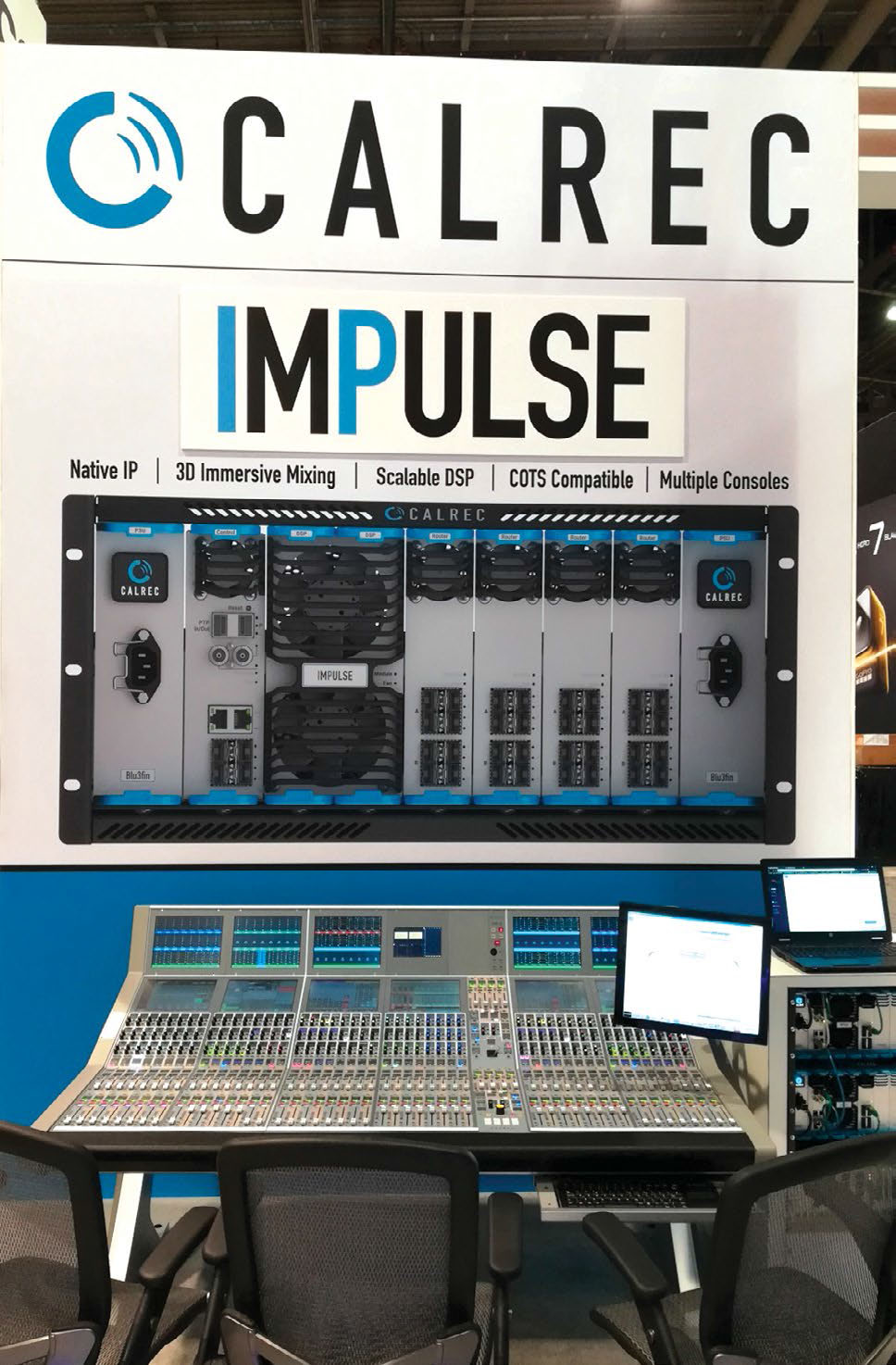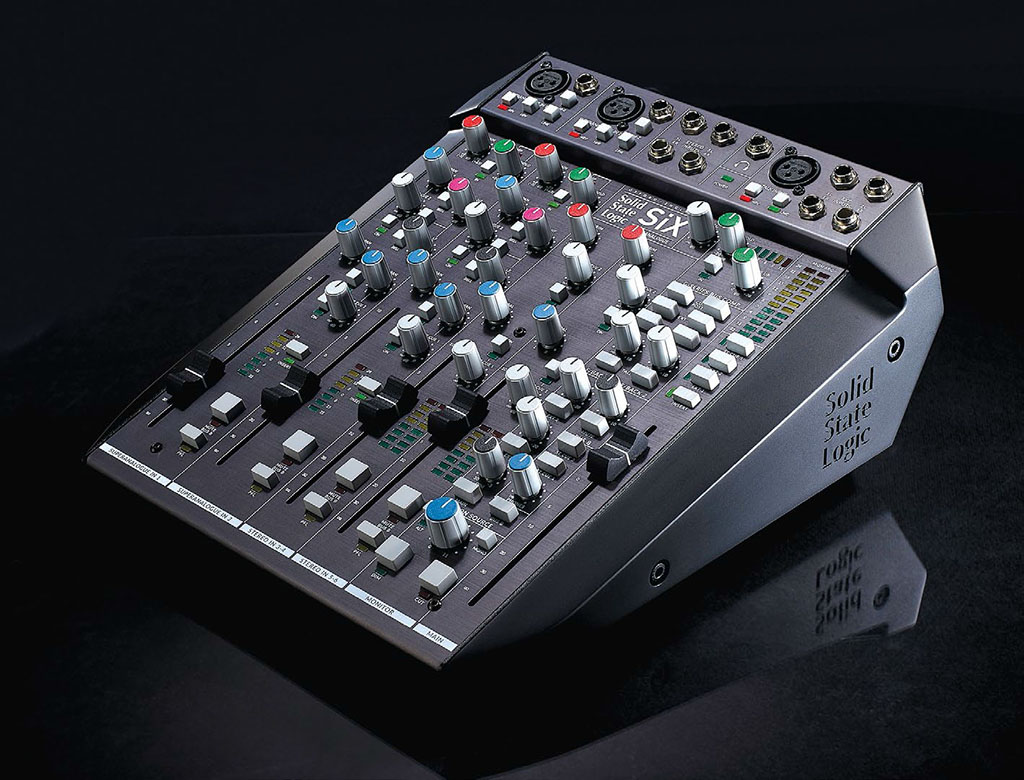Audio Boards Expand IP Capabilities
NEW YORK—AoIP continues to advance, as reflected in the audio consoles that were released at the 2019 NAB Show.

Wheatstone rolled out a new console that packs 64 channels and native IP audio networking into a 40 inch frame that fits most television applications and budgets under $75,000. The Strata 32 targets newsrooms, remote vans and sports venues with dedicated faders for eight subgroups and two masters along with 32 physical faders that can be layered for 64 channels. It integrates seamlessly with all the major production automation systems and comes with IP audio mix engine and optional stagebox.
The company also introduced the Virtual Dimension Three virtual mixer as a standalone user interface into its WheatNet-IP audio network. Virtual Dimension Three can be used anywhere there’s a PC touchscreen or several touchscreens connected over the audio network. Similar in feel and function to the popular Dimension Three hardware surface, Virtual Dimension Three includes familiar buttons, knobs and multitouch navigation and menu-ing for adjusting EQ curves, filtering and other custom settings.
Virtual Dimension Three comes with a rackmount mix engine to handle mixing and processing as part of the Wheat- Net-IP audio network, which provides direct connectivity into major production automation systems.
Ross Video, Grass Valley and Sony have a longtime vendor partnership with Wheatstone’s WheatNet-IP audio network, making for a fully integrated user experience between automation and console functions.
“Automation and virtualization are fundamental to being able to produce more content,” said Wheatstone Senior Sales Engineer Phil Owens. “With Virtual Dimension Three, we’re complementing what is being automated in the control room with the easy accessibility of a virtual interface so that operators can make immediate, precise adjustments as needed.”
The AES67-compatible WheatNet-IP audio network is a complete IP audio ecosystem of consoles, talent stations, I/O units, and accessories.
The professional video industry's #1 source for news, trends and product and tech information. Sign up below.
Wheatstone also introduced a new AoIP appliance to allow users to seamlessly share full studio operation between facilities, sports venues, and other sites in separate locations. The SwitchBlade is a WheatNet-IP audio network appliance that includes AoIP logic control, SIP connectivity and codec bandwidth optimization—all critical for being able to produce content at a sporting or news remote.
SwitchBlade extends the AoIP network beyond the studio walls and lets the operator remotely adjust EQ, dynamics, and turn mics on and off at a remote location from the main studio several miles and time zone’s away. SwitchBlade has two ethernet connections, one for connecting to a SIP service provider or SIP-enabled PBX phone system and the other for connecting directly into the WheatNet-IP audio network. It comes with major codecs, including 256 Kb/s stereo Opus and G.711, for high quality program distribution between studios, networks, and affiliates, news gathering or sports venues.
“Not only will it carry the audio, it carries the control, which means you can send and receive router commands, automation control, and even fader levels across the two locations,” said Jay Tyler, sales director for Wheatstone. ”This is a real game changer because Switchblade finally makes it possible to monitor each point of the audio chain and switch audio locally from network operation centers around the world.”
Using WheatNet-IP’s Application Control Interface (ACI), the SwitchBlade offers up to 24 modules that show up as sources/destinations in the WheatNet-IP NAVIGATOR software, and are therefore available on every WheatNet-IP console surface and monitor selector in the system.
SIMPLE UPGRADE PATH

The most significant difference between Calrec’s new ImPulse and the company’s previous products is that it is built on a native IP backbone, with AES67 and SMPTE 2110 connectivity, according to Dave Letson, vice president of sales for the company.
“ImPulse illustrates a clear direction for Calrec’s future development,” he said. “It’s compatible with existing Apollo and Artemis control surfaces, providing a simple upgrade path for current Calrec customers as they transfer to IP infrastructures.”
Up to four DSP mix engines and controls systems can run independently on a single core. ImPulse sports an AoIP router which supports NMOS discovery and connection management, and mDNS/Ravenna discovery. ImPulse provides 3D immersive path widths and panning, with full monitoring and metering, height and eD pan controls. Paths of all widths can co-exist within a mix and be routed to and from one another with flexible panning and downmixing built in.
SMALL CONSOLE, MORE FADERS
Lawo bumped up the fader count on the third generation of its mc²56 IP audio production console this year. Up to 144 faders are now housed in this small size console. The dual fader option incorporates Lawo’s LiveView thumbnail preview feature, which presents thumbnail previews of associated video streams directly in the fader strips.

This console is optimized for the IP-video production environment, featuring native support for SMPTE 2110, AES67/Ravenna, Dante and MADI audio streams. The mc²56 has adopted the SMPTE 2022-7 standard for Seamless Protecting Switching (SPS), delivering dual-redundant IP-network links to its Nova73 routing engine. Built-in loudness metering is standard, with full loudness control adhering to ITU 1770 (EBU/R128 or ATSC/A85) specifications.
For mobile productions the scalable DSP performance with temporary licenses can turn CAPEX into OPEX.
Lawo also rolled out its new UHD Core, a network-based, software-defined audio DSP engine. Utilizing the IP network as an extension of the console core’s backplane, the UHD Core can be located anywhere on the network. Its ultra-high processing density—with 1,024 fully featured mc² DSP channels—can either be utilized by a single mc² console or shared by a maximum of four boards.
ULTIMATE DESKTOP MIXER
Audio pros of a certain age remember when Mackie first released a tiny mixer—the 1604—that revolutionized the home recording industry. With the introduction of SiX, billed as “the ultimate desktop mixer,” SSL may have brought this revolution full circle.

SiX sports a pair of recording channels with SuperAnalogue mic pres, a one knob version of the classic SSL Channel Compressor, a new two-band Channel EQ, inserts and 100mm faders. There is a two-knob version of the legendary G-Series Bus Compressor on the main mix bus and a Listen Mic Compressor on the Talkback.
“With over 30 years’ involvement in the design of SSL consoles, when developing the concept of SiX, I thought hard on what our users appreciate about our larger consoles; what helps their workflow and delivers quality results for them,” said Niall Feldman, director of new products for SSL. “The big challenge was how to deliver those values and features in a compact product. The resultant SiX mixer is one of our proudest achievements.”
SSL also launched its S500m console, which provides all the flagship features of the company System T S500 console in a form factor that is more than 25% lighter, specifically designed for OB and flypack applications where weight and portability are key concerns.
“The complexities involved in today’s major sports and entertainment events means our OB partners still require broadcast consoles with a high specification, yet be robust and easy to transport” comments Tom Knowles, broadcast product manager for SSL. “The S500m brings the portability and added flexibility our clients need for a multitude of broadcast environments, making it the ideal choice as a flypack or transportable OB option.”
SSL also released their Dynamic Automation Software (DAS) at NAB. Designed to work with all System T broadcast production consoles, DAS expands System T’s capabilities.
“Dynamic automation has become a necessity for many of our major broadcast clients, for both live to air and complex television post production tasks,” Knowles said. “By offering this as a software option our clients can adapt their System T capability as they need it.”
COMBINES MIXER AND SURFACE
For smaller facilities and similar-sized budgets, Telos rolled out its Axia iQx AoIP console at the show. The compact mixer combines the mix engine and surface into one unit, enabling quicker setup. iQx is AES-67 compliant and can also support SMPTE 2110-30. Also, there are no limits to the number of sources and connections users can access on the network.
iQ is Telos’ radio console system, that can be used to build custom consoles of sizes from 8 to 24 faders, however it could also be installed as a reliable standby for TV audio production needs as well, according to Marty Sacks, vice president, sales and support for Telos.
“The iQ family can be used as a backup for larger desks in a production environment,” he said.
